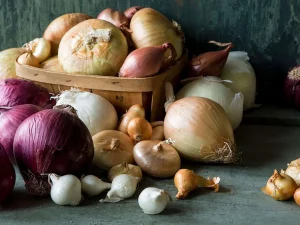In today’s dynamic and competitive agricultural landscape, farmers are constantly seeking ways to maximize the profitability of their crops. Pawpaw farming, with its sweet and nutritious fruits, presents a prime opportunity for farmers to not only cultivate a valuable crop but also to enhance its market appeal and overall value.
Adding value to pawpaw farms goes beyond the cultivation of fresh fruit; it involves a strategic approach that can significantly increase revenue, open up new markets, and establish a unique brand identity.
In this discussion, we will explore reasons why farmers should consider adding value to their pawpaw farms, the diverse avenues through which this can be achieved, and the tangible benefits that arise from such endeavors.
From processing pawpaw fruits into delectable products to adopting sustainable and ethical farming practices, the value-added approach holds the promise of transforming pawpaw farming into a thriving and sustainable venture.
How to Add Value to Your Pawpaw Farm
1. Processing into Value-Added Products
- Papaya Jam and Jelly: Transform ripe pawpaws into delicious jams and jellies. Experiment with flavors like papaya-pineapple or papaya-mango to create unique products.
- Papaya Puree: Process ripe pawpaws into puree, which can be used in smoothies, baby food, or as an ingredient in various recipes.
- Dried Papaya: Dehydrate pawpaw slices to make dried papaya snacks. These have a longer shelf life and are perfect for on-the-go consumption.
- Papaya Juice: Fresh papaya juice is a nutritious beverage. Consider bottling and pasteurizing it for sale in supermarkets and health food stores.
Packaging and Presentation:
2. Invest in environmentally friendly and visually appealing packaging.
Consider eco-friendly options like biodegradable or recyclable materials to appeal to environmentally conscious consumers. Include informative labels with details on the fruit’s origin, nutritional benefits, and suggested uses. Transparency in labeling can build trust with consumers.
3. Quality Control:
- Implement rigorous quality control standards throughout the entire production process. This includes careful selection of fruits, post-harvest handling, and packaging.
- Regularly conduct quality assessments to ensure consistency in taste, texture, and appearance.
4. Branding and Marketing:
- Develop a compelling brand identity that conveys the quality and uniqueness of your pawpaw products.
- Utilize online marketing channels, such as social media and e-commerce platforms, to reach a wider audience. Engage with consumers through visually appealing content and customer testimonials.
5. Certifications:
- Pursue certifications that align with your farming practices and target market. For instance, organic certification can appeal to health-conscious consumers.
- Highlight these certifications prominently on your product labels and marketing materials.
6. Export Opportunities:
- If feasible, explore export opportunities to reach international markets. Ensure compliance with international standards for food safety and quality.
- Collaborate with export agencies and organizations to navigate export regulations and logistics.
7. Educational Workshops and Tours:
- Organize workshops, seminars, or farm tours to educate consumers about the health benefits of pawpaws and sustainable farming practices.
- Engage with schools, local community groups, and health organizations to spread awareness.
8. Collaborations:
- Collaborate with local restaurants, bakeries, and food producers to create unique culinary experiences using your pawpaw products.
- Feature these collaborations on your marketing materials to attract food enthusiasts.
9.Value-Added Recipes:
Provide customers with a collection of creative recipes that incorporate pawpaw products. Include both sweet and savory options to showcase the versatility of pawpaws.
10. Online Sales Platforms:
Set up an e-commerce website or use established online marketplaces to sell your products. Offer convenient and secure online payment options.
Invest in professional product photography and detailed product descriptions to attract online shoppers.
11. Sustainability and Ethical Practices:
Emphasize your commitment to sustainable and ethical farming practices. Highlight efforts such as minimal pesticide use, responsible water management, and fair labor practices. Share stories and images of your farm and its positive impact on the local environment and community.
12. Value-Added Services:
Farmers can consider the following value-added services:
Farm Tours: Offer guided tours of your pawpaw orchard. Educate visitors about pawpaw cultivation, from planting to harvesting. Highlight sustainable and organic farming practices.
U-Pick Experiences: Allow customers to pick their own pawpaws directly from the trees. Provide baskets or containers, and charge a fee based on the weight of the fruit they collect.
Pawpaw Tastings: Organize tasting sessions where visitors can sample different pawpaw varieties and learn about their distinct flavors and culinary uses.
Cooking Workshops: Host cooking classes or workshops using pawpaws as the primary ingredient. Teach participants how to prepare delicious dishes, jams, or desserts.
Picnic Areas: Create designated picnic spots on your farm where visitors can enjoy a meal surrounded by pawpaw trees and natural beauty.
13. Collaborate with Food Manufacturers:
Partner with food manufacturers to co-create unique pawpaw-based products. Collaborate on product development and distribution strategies. Another way to do this is through contract farming.
Contract farming is a mutually beneficial arrangement gaining traction in agriculture, and it holds great potential for pawpaw (papaya) cultivation. This practice involves formal agreements between farmers and buyers or agribusinesses.
The contract outlines terms like pawpaw varieties, production methods, quality standards, pricing, and delivery schedules. Buyers often provide inputs and technical guidance. Contract farming offers benefits such as a secure market, reduced risks, stable income, and access to modern techniques.
Farmers can meet quality standards, attract higher prices, and promote sustainable practices. However, successful contract farming requires legal compliance, transparent communication, continuous training, diversifying partners, flexibility, and long-term commitment.
14. Research and Development:
Invest in research and development to create innovative pawpaw products that align with consumer preferences and emerging dietary trends.
Stay informed about market trends and consumer demands to adapt your product offerings accordingly. By incorporating these in-depth strategies, you can add significant value to your pawpaw products, differentiate yourself in the market, and build a loyal customer base that values the quality, sustainability, and uniqueness of your offerings.





I do believe all the ideas youve presented for your post They are really convincing and will certainly work Nonetheless the posts are too short for novices May just you please lengthen them a little from subsequent time Thanks for the post